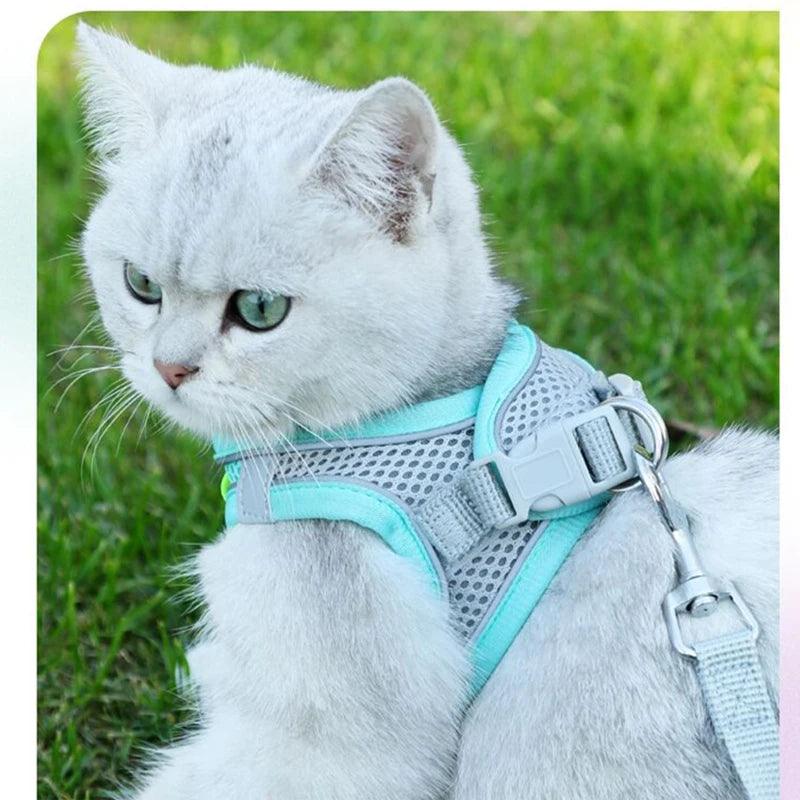Curious about harnesses for your cat? Whether you want to take your indoor cat on outdoor adventures or simply keep them safe during vet visits, harnesses can be a game-changer. But with so many questions swirling around—Are dog harnesses okay for cats? Why do cats flop with harnesses?—it’s time to get expert answers.
Can Cats Wear Dog Harnesses?
The short answer: no, dog harnesses are not recommended for cats. Cats’ unique body shapes and behaviors require harnesses designed specifically for them. Dog harnesses can be too loose, allowing cats to escape, or too tight, causing discomfort28.
Why Do Cats Flop When Wearing a Harness?
Many cats “flop” or freeze the first time they wear a harness. This is usually a stress response or a reaction to the pressure points the harness creates. It may remind them of being picked up by their mother or trigger a “play dead” instinct in response to perceived danger5.
Is There a Difference Between Dog and Cat Leashes?
While leashes for dogs and cats can look similar, cat leashes are often narrower and lighter. Some types include flat leashes, bungee leashes (which absorb shock), and retractable leashes. The most important factor is pairing the right leash with a well-fitted cat harness6.
Is It OK for a Cat to Wear a Harness All the Time?
No, it’s not safe for cats to wear a harness continuously. Risks include:
-
Injury if the harness gets caught on furniture or objects
-
Skin irritation and hair loss from constant rubbing
-
Stress and anxiety from prolonged restraint
-
Interference with grooming, leading to hygiene issues3
Harnesses should only be used for short, supervised periods.
Is a Collar or Harness Better for a Cat?
Harnesses are safer for walking or outdoor adventures. Collars can put pressure on the neck and are not escape-proof. Harnesses distribute pressure across the chest and shoulders, reducing the risk of injury.
How to Harness Train Your Cat
-
Start Early: Kittens adapt more quickly, but adult cats can learn too.
-
Introduce Gradually: Let your cat investigate the harness before putting it on.
-
Short Sessions: Begin with a few minutes at a time, gradually increasing duration.
-
Use Treats: Reward your cat for calm behavior in the harness.
Should I Take My Indoor Cat Outside on a Harness?
If your cat is curious about the outdoors, harness training can provide safe exploration and enrichment. Always supervise your cat and avoid areas with heavy traffic or potential hazards9.
Can Cats Wear Dog Leashes?
Yes, as long as the leash is lightweight and paired with a cat-specific harness. The most important factor is the harness, not the leash6.
Do Cats Like Being in a Harness?
Some cats tolerate harnesses well, while others never fully accept them. It depends on the cat’s personality, age, and how the harness is introduced. Never force your cat; patience and positive reinforcement are key9.
Common Problems and Solutions
| Problem | Solution |
|---|---|
| Cat flops or refuses to move | Try a different harness, ensure proper fit, go slow with training |
| Cat escapes harness | Use an escape-proof, cat-specific harness |
| Cat seems stressed or anxious | Limit harness time, use treats, ensure positive experiences |
| Harness causes irritation | Check fit, choose soft materials, don’t leave on too long |
Final Thoughts
Harness training opens new possibilities for safe, supervised adventures with your cat. Always choose cat-specific harnesses, introduce them gradually, and prioritize your cat’s comfort and safety. With patience, you and your feline friend can enjoy the great outdoors together—one step at a time

